It has been over a month since most of this summer’s trades were finalized and more than two weeks since any deal was completed. However, RealGM has updated its invaluable tracker of traded draft picks with new details on some of the picks that changed hands this offseason that we hadn’t seen reported anywhere else.
Here are a few of the clarifications and new details from RealGM’s list that we’d been keeping an eye out for:
The 2025 second-rounders in the six-team Klay Thompson trade
The Hornets created some confusion on July 6 when they announced in a press release that their part of the first ever six-team trade involved sending Philadelphia’s 2025 second-round pick to the Nuggets, which didn’t align with reporting leading up to the deal or with the Mavericks‘ press release announcing the move.
Based on reports out of Minnesota and Denver, we were able to piece together the details, which RealGM has confirmed. Charlotte did send that pick to Denver, but the Nuggets flipped it within the same transaction — the Mavericks will receive the most favorable of the Nuggets’ and Sixers’ 2025 second-rounders, while the Timberwolves will get the least favorable of the two.
To clarify, prior to the trade, the Nuggets controlled their own 2025 second-round pick and Charlotte controlled the Sixers’ 2025 second-rounder, but those picks have essentially now been paired together to create most/least favorable terms for Dallas and Minnesota. I don’t recall ever seeing picks from two separate teams combined like that in a single transaction, but I suppose it wouldn’t be a six-team trade if we weren’t seeing something new.
The Spurs’ 2031 first-round swap rights
The swap rights the Spurs acquired in the three-team DeMar DeRozan trade will allow San Antonio to swap its own 2031 first-round pick for the Kings‘ 2031 first-rounder.
San Antonio had previously acquired the Timberwolves’ 2031 first-round pick, so I’d thought the Spurs might be able to swap the least favorable of those two picks for the Kings’ selection, essentially getting the two most favorable of those three picks. But the Minnesota pick won’t be involved in those swap rights at all — the Spurs will simply acquire it separately.
The Grizzlies’ 2030 second-round pick
The 2030 second-round pick that the Timberwolves acquired from the Grizzlies in the four-team trade involving Wendell Moore and a series of 2024 second-rounders is top-50 protected. That pick was previously said to be protected, but I hadn’t seen the specific details of that protection reported until now.
If that pick falls between 51-60, Minnesota will get it. Otherwise, the Grizzlies will keep it and their obligation to the Wolves will be extinguished.
You can find the full details on all of this offseason’s trades right here.


 That meant trading three-and-D standout
That meant trading three-and-D standout 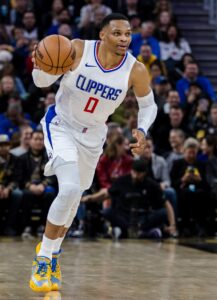
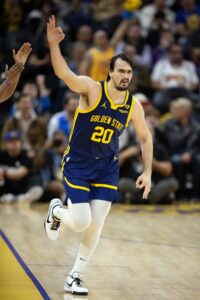 Losing Caldwell-Pope allowed the Nuggets to free up their taxpayer mid-level exception, which they used to sign stretch forward/center
Losing Caldwell-Pope allowed the Nuggets to free up their taxpayer mid-level exception, which they used to sign stretch forward/center 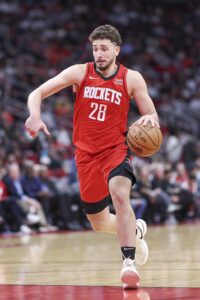 Chris Duarte
Chris Duarte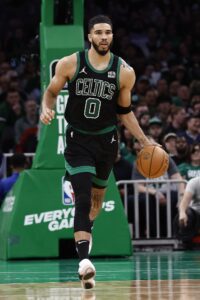 Celtics forward
Celtics forward 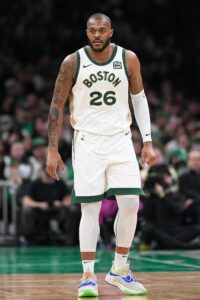
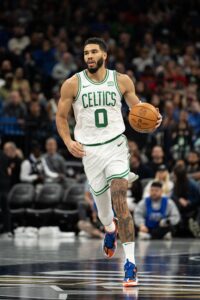 Besides re-signing most of their own free agents, the Celtics agreed to long-term extensions with All-NBA forward
Besides re-signing most of their own free agents, the Celtics agreed to long-term extensions with All-NBA forward 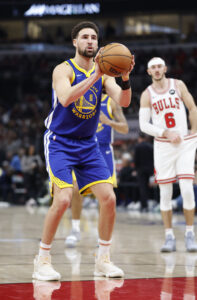
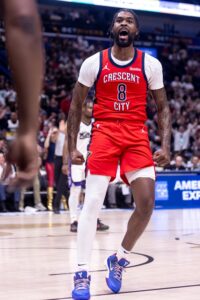 That didn’t happen though. Instead, Jones opted to sign a three-year, $30MM contract with the Clippers, prompting the Mavs to pivot to another free agent,
That didn’t happen though. Instead, Jones opted to sign a three-year, $30MM contract with the Clippers, prompting the Mavs to pivot to another free agent, 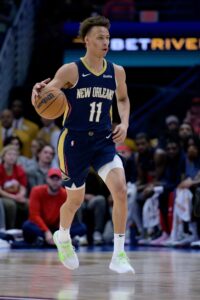 Acquired the draft rights to
Acquired the draft rights to  While Atlanta made two more minor deals this summer, trade candidates like Young,
While Atlanta made two more minor deals this summer, trade candidates like Young,